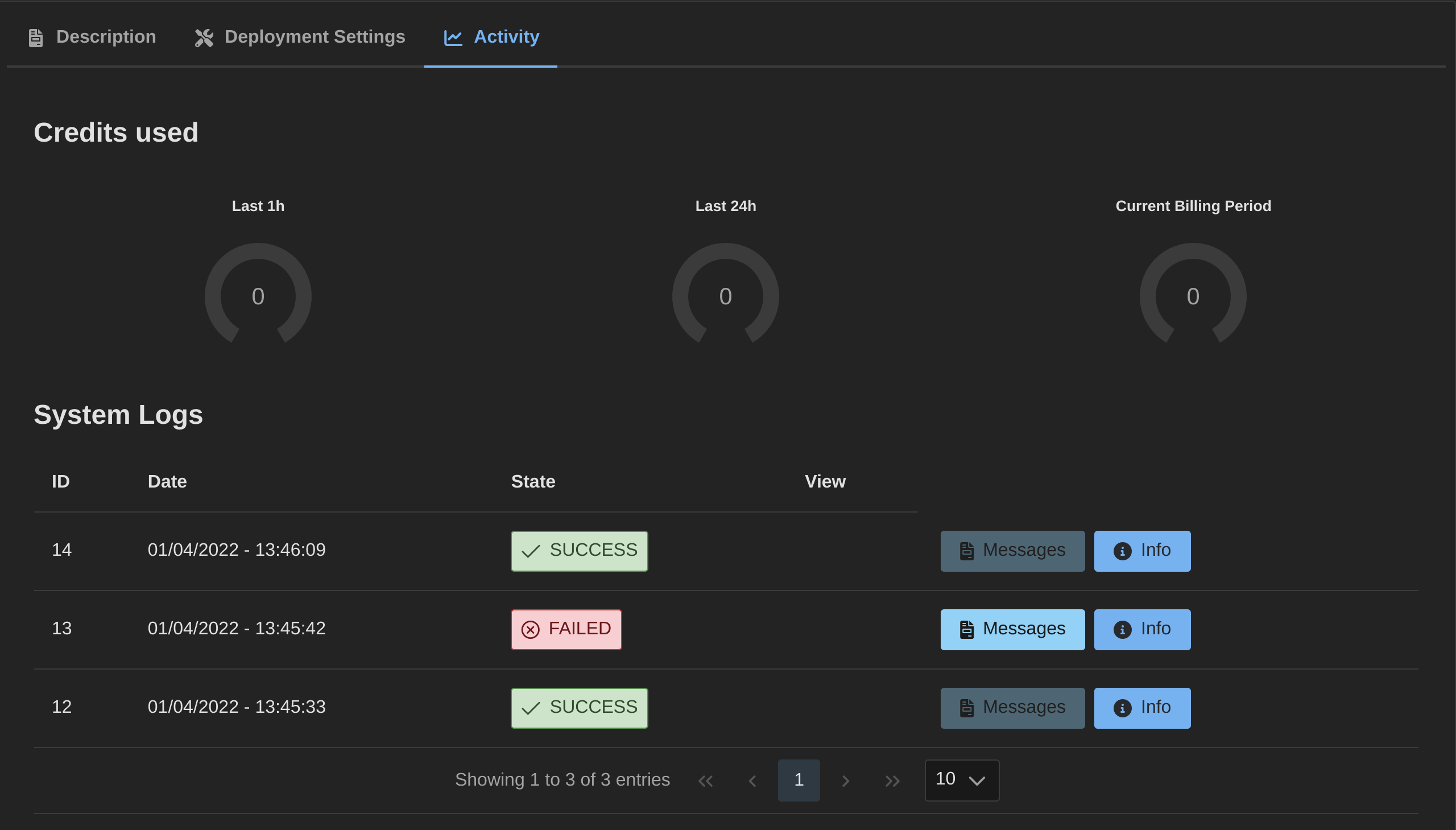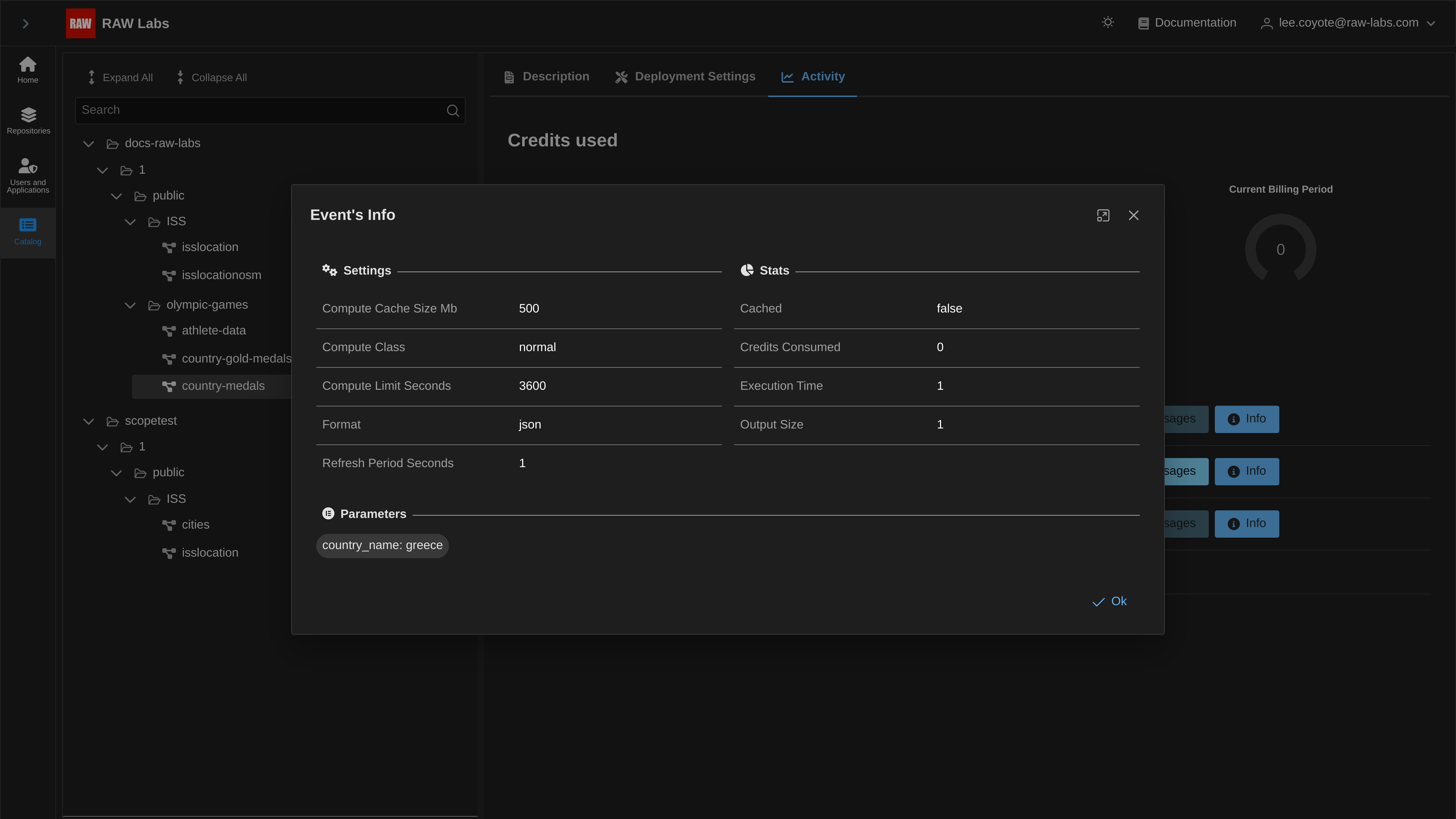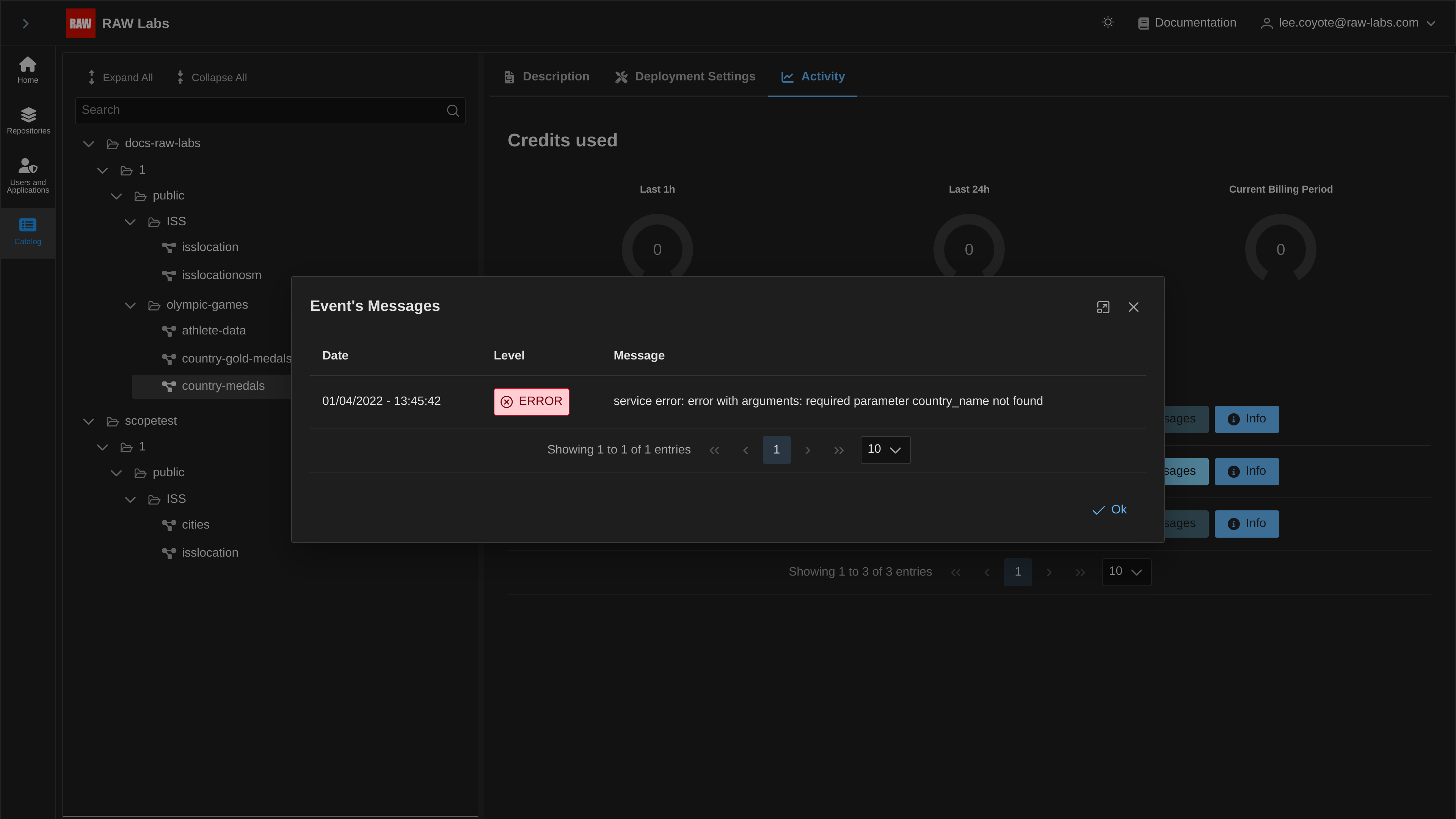Activity
Description
This tab visualizes the activity of the selected endpoint. The term activity refers to the invocations of the endpoint made by a user or a computer program.These are logged in RAW and shown to the user in reverse chronological order:

There are several elements shown in this screen:
- ID: an identifier for the specified invocation attempt
- Date: invocation timestamp
- State: an indication of success (
SUCCESS) or failure (FAILED) of the invocation. - Invocation Details (View): contextual information of the invocation including execution environment attributes and error messages
Invocation Details
As stated previously, there are two types of contextual information regarding an endpoint invocation, namely info and messages.
Info
Clicking on Info button users can see the execution environment attributes of the selected invocation attempt:

These attributes are the following:
- Settings: environment settings defined in the endpoint yaml. Specifically:
- Compute Cache Size Mb: cache size in megabytes.
- Compute Class: computational class to use.
- Compute Limit Seconds: number of seconds threshold before compute task is interrupted.
- Format: endpoint output format. Potential values:
json,csv. - Refresh Period Seconds: cache time-to-live in seconds before refresh.
- Parameters: list of pairs of input parameter and respective value, defined by the called.
- Stats
- Cached:
trueif the invocation is cached orfalseotherwise. - Credits Consumed: number of credits consumed during invocation. Currently credits are set to 0.
- Execution Time: number of milliseconds of the actual execution, without considering network delay.
- Output Size: volume of output data in KBs.
- Cached:
Messages
In case of errors, additional information is exposed by clicking on Messages button:

One invocation may result in multiple errors, each shown in distinct line. Each record has the following attributes:
- Date: timestamp of the error
- Level:
ERRORorWARNING. An error is a terminal event which causes invocation failure, whereas a warning may not result in invocation failure. - Message: the actual error/warning explanation
Indicatively, in the specific error shown above, users are informed of the fact that the endpoint should receive certain input arguments but none was provided.
Note also that upon successfull invocation, this functionality is not applicable, therefore the Messages button is disabled.